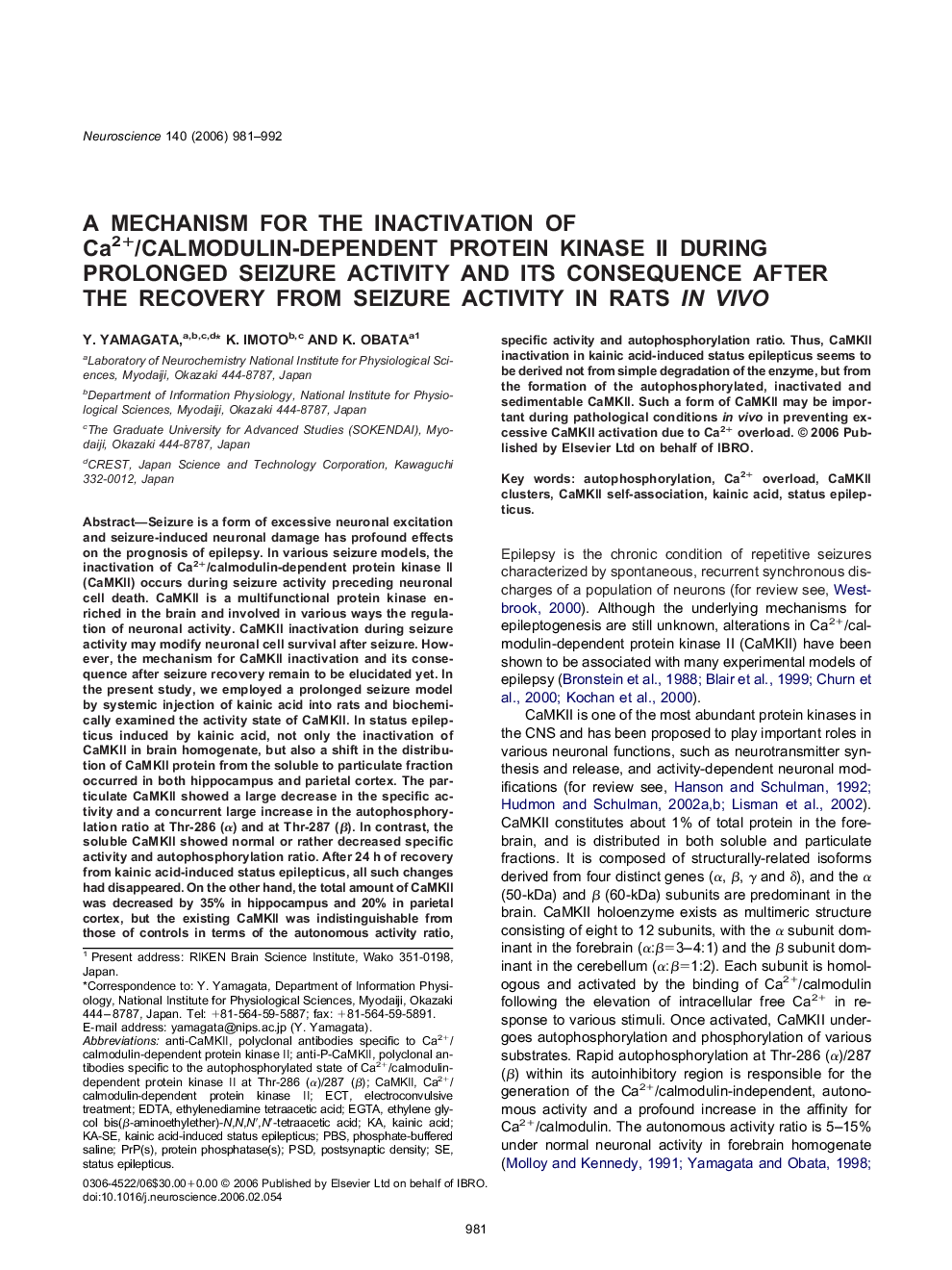| کد مقاله | کد نشریه | سال انتشار | مقاله انگلیسی | نسخه تمام متن |
|---|---|---|---|---|
| 4341685 | 1295843 | 2006 | 12 صفحه PDF | دانلود رایگان |

Seizure is a form of excessive neuronal excitation and seizure-induced neuronal damage has profound effects on the prognosis of epilepsy. In various seizure models, the inactivation of Ca2+/calmodulin-dependent protein kinase II (CaMKII) occurs during seizure activity preceding neuronal cell death. CaMKII is a multifunctional protein kinase enriched in the brain and involved in various ways the regulation of neuronal activity. CaMKII inactivation during seizure activity may modify neuronal cell survival after seizure. However, the mechanism for CaMKII inactivation and its consequence after seizure recovery remain to be elucidated yet. In the present study, we employed a prolonged seizure model by systemic injection of kainic acid into rats and biochemically examined the activity state of CaMKII. In status epilepticus induced by kainic acid, not only the inactivation of CaMKII in brain homogenate, but also a shift in the distribution of CaMKII protein from the soluble to particulate fraction occurred in both hippocampus and parietal cortex. The particulate CaMKII showed a large decrease in the specific activity and a concurrent large increase in the autophosphorylation ratio at Thr-286 (α) and at Thr-287 (β). In contrast, the soluble CaMKII showed normal or rather decreased specific activity and autophosphorylation ratio. After 24 h of recovery from kainic acid-induced status epilepticus, all such changes had disappeared. On the other hand, the total amount of CaMKII was decreased by 35% in hippocampus and 20% in parietal cortex, but the existing CaMKII was indistinguishable from those of controls in terms of the autonomous activity ratio, specific activity and autophosphorylation ratio. Thus, CaMKII inactivation in kainic acid-induced status epilepticus seems to be derived not from simple degradation of the enzyme, but from the formation of the autophosphorylated, inactivated and sedimentable CaMKII. Such a form of CaMKII may be important during pathological conditions in vivo in preventing excessive CaMKII activation due to Ca2+ overload.
Journal: Neuroscience - Volume 140, Issue 3, 2006, Pages 981–992